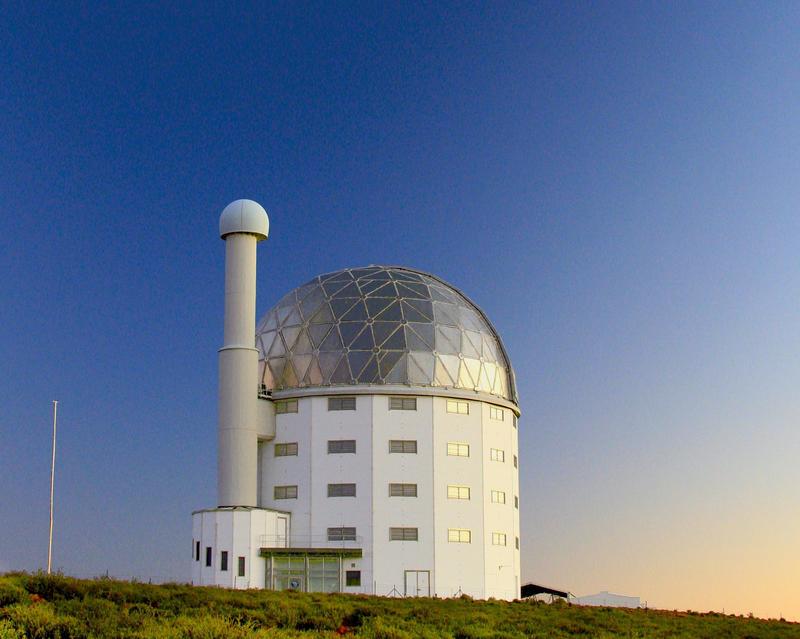The beauty of the unknown: addressing the biggest questions in astrophysics
07 June 2018 | Story Ambre Nicolson. Photo Wynand Basson. Read time 9 min.
The new South Africa Research Chair in Fast Transients and Gravitational Waves Counterparts, recently awarded to UCT and Professor Paul J. Groot of Radboud University, offers the chance for scientists from a variety of southern African research facilities to study some of the most pressing questions in contemporary astrophysics.
Professor Groot discovered a vocation for astronomy during his early days as an undergraduate at the University of Amsterdam. “The beauty and mystery of the unknown, the universality of the laws of physics and the inventiveness required to deduce what is going on out there by using the small amount of information encapsulated in the light of stars still captures me as the ideal combination of discovery, wonder, research and creativity,” he says.
He first visited South Africa in 2005 together with 17 students from Radboud University. Since then, UCT and Radboud University have collaborated on data science research in astronomy, culminating in the MeerLICHT telescope being installed at the Sutherland Observatory last year.
Groot will now continue this work in the role of the new South Africa Research Chair in Fast Transients and Gravitational Waves Counterparts, funded by the Southern African Large Telescope (SALT) and awarded by South Africa’s Department of Science and Technology and the National Research Foundation to UCT at the end of 2017.
...the research chair will allow a network of scientists to study one of the hottest topics in contemporary astrophysics: the origin of gravitational wave mergers.
“SALT is important for many reasons,” explains Groot. “As the premier optical telescope for the South African community, it allows South Africa to be among the top countries in astronomy worldwide.
“I work in the field of transient astronomical events. These are explosive events that signal the destruction of stars. In their final death throes, they flare up for seconds to weeks, and then dim completely after that. SALT will play a very important role in the study of such events because it is the only major telescope in the southern hemisphere outside of Chile. For fast-fading events, this gives us a clear, competitive edge.”
Using SALT and other multi-wavelength facilities, the research chair will allow a network of scientists to study one of the hottest topics in contemporary astrophysics: the origin of gravitational wave mergers. These events were first detected in 2015, a hundred years after they were predicted by Einstein. As Groot explains: “Two black holes or neutron stars merge and give off an enormous amount of radiation, all in the form of gravitational waves. If a neutron star is involved, it can also give a short-lasting, faint 'blip' of light. This was first detected from an event that went off last August.”
“The flexibility of SALT, together with its light-gathering power, will be enormously important for gravitational wave counterparts.”
According to Groot, the new MeerLICHT telescope at Sutherland combined with the new Lesedi telescope and SALT makes a very powerful package for the detection and characterisation of these short-lasting, faint events. “The flexibility of SALT, together with its light-gathering power, will be enormously important for gravitational wave counterparts,” he says.
Another of the goals of the new research chair is to foster a community of scientists and to connect to other multi-wavelength facilities in South Africa.
“First and foremost, these will be the MeerKAT radio array and the MeerLICHT optical telescope,” says Groot. “Our aim is to open up the field of radio-optical transient events, and try to understand the physics connected to stellar explosions and how binary star mergers work.
“The radio and optical radiation emitted by these events is radiated away through different physical processes and at varying times. To be able to have an in-depth look in how these explosions work requires teaming up a number of telescopes.”
Groot explains that this trio of telescopes can also be tied in with orbiting X-ray and UV satellites to make an even more powerful combination. “As a SARChI chair, as the principal investigator on MeerLICHT and as a member of the Virgo collaboration, I am in an ideal position to connect all of these facilities.”
 This story was published in the inaugural issue of Umthombo, a magazine featuring research stories from across the university.
This story was published in the inaugural issue of Umthombo, a magazine featuring research stories from across the university. Umthombo is the isiXhosa word for a natural spring of water or fountain. The most notable features of a fountain are its natural occurrence and limitlessness. Umthombo as a name positions the University of Cape Town, and this publication in particular, as an undepletable well of knowledge.
Read the complete first issue online or subscribe and receive new issues in your inbox every few months.
 This work is licensed under a Creative Commons Attribution-NoDerivatives 4.0 International License.
This work is licensed under a Creative Commons Attribution-NoDerivatives 4.0 International License.
Please view the republishing articles page for more information.










